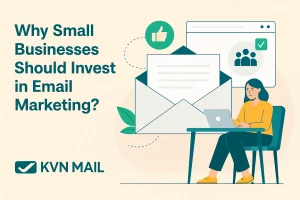Employees spend nearly one-fourth of their workday, on average, sorting through their email inbox, a study by McKinsey found. Email is the most used form of communication in the workplace, but it’s also easy for the emails you send to be quickly deleted or marked as irrelevant.
Salespeople, particularly those who rely on email as their first point of contact with prospects, need to ensure their emails are relevant, appropriate, and able to cut through the noise of a busy inbox. Needless to say, so do marketers.
Here are top tips for crafting an email that will encourage opens, generate interest, and warrant a response.
1. Perfect the subject line
A subject line is a gateway into your email. It needs to instantly grab the receiver’s attention to ensure your email doesn’t end up in the dreaded junk folder.
First, keep it short: Place the most descriptive words at the beginning of your subject line to give readers a quick snapshot of what your email contains. For salespeople, in particular, putting “Proposal” or “Meeting Request” is a great way to start a subject line. These kinds of words clearly let the recipient know what you’re connecting about, so they aren’t confused or surprised.
A generic subject line isn’t going to pique the interest of a lead or prospect. Asking a question or including a stat can give recipients a glimpse into the purpose of your email and may entice them to click open.
And don’t be afraid to get creative when crafting a subject line. For example, one of the colleagues received a follow-up email with the subject line: “WANTED:” and then his name written after the colon. The email body had a WANTED poster image with his name and face on the image; needless to say, it grabbed colleague’s attention. He hadn’t been responding to the senders’ emails, but he immediately responded after receiving that email.
Still, maintaining a certain level of professionalism is important. Emails are becoming more informal and conversational, but it’s difficult to impart tone via email. Keep that in mind when sending an email that is a bit more creative than the usual. Worst case scenario for an email you thought was witty or creative: your recipient takes it the wrong way.
2. Keep it short and simple
Don’t offset your concise subject line with a longwinded email. Visually, a long email can seem overwhelming and may deter the recipient from reading it. Among salespeople, this is one of the most common mistakes during email outreach.
To help keep your emails short, use the first two sentences to connect with your recipient and then quickly establish your purpose for writing. Those first few sentences are a prime real estate in your email. They are especially important if your recipient uses the inbox preview pane.
Within the first few seconds of reading your email, recipients should have a clear understanding of who you are and why you’re reaching out.
If you’re a salesperson, right from the get-go provide a compelling state or an example of an outcome your product or service has produced for a client. Doing so will help build credibility and capture interest in a few short sentences. After your introduction, you can then go into more detail about your product or service.
However, make sure you don’t use email to sell all the great features of your product or service; a phone call or in-person meeting is a more appropriate channel for the actual selling. The purpose of your initial outreach is just to provide a glimpse into some of the useful features your product or service offers in order to hook the recipient into responding and, eventually, having a more in-depth conversation over the phone or in person.
3. End with a specific call to action
This is one of the most important tips for writing an email that will elicit a response. Pose specific questions, such as, “Are you free to discuss this further next Tuesday at 2 PM?” Identifying a specific day and time, along with an alternative day and time, makes it easier to schedule something with a recipient, versus going back and forth with each other’s schedules.
Once you are done drafting your email, it’s important to make sure it gets to the right person. Targeting specific people who have the power to make buying decisions is the most effective use of your time—and email. Google and LinkedIn are both great resources for finding the right decision-makers.
After you’ve found the right person and hit “send,” an email tracker can help you better understand whether your email was successful by determining its reach and effectiveness. Email trackers can even tell you the number of times your email was forwarded, the geographic location it was opened, and what devices the email was viewed on. That information can be helpful in determining not only whether your email strategies have been effective but also when and on what channel to follow up with your recipients.
Learn More about email marketing with Google Digital Unlocked Videos
Source: m.marketingprofs.com


